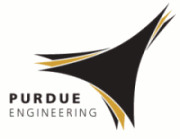Abstract
Mathematics and science knowledge/skills are most commonly associated with engineering’s pre-requisite knowledge. Our goals in this paper are to argue for a more systematic inclusion of social science and humanities knowledge in the introduction of engineering to K-12 students. As part of this argument, we present a construct for framing the humanistic side of engineering with illustrative examples of what appealing to the humanistic side of engineering can look like in a classroom setting, and opportunities for research that examines the dynamics the humanistic side of engineering introduces into engineering learning and teaching. The illustrative examples are drawn from interactions among student-teams from elementary classrooms engaged engineering activities that appeal to the humanistic side of engineering. Referencing these examples as well as other established engineering education programs, we will discuss opportunities for research in the education of K-16 students. These opportunities span understanding how students’ attitudes, beliefs, and perceptions, particularly among traditionally underrepresented populations, to how students’ engineering knowledge and practices develop in the context of a humanistic approach to engineering.
Recommended Citation
Hynes, M.,
&
Swenson, J.
(2013).
The Humanistic Side of Engineering: Considering Social Science and Humanities Dimensions of Engineering in Education and Research.
Journal of Pre-College Engineering Education Research (J-PEER), 3(2), Article 4.
https://doi.org/10.7771/2157-9288.1070


